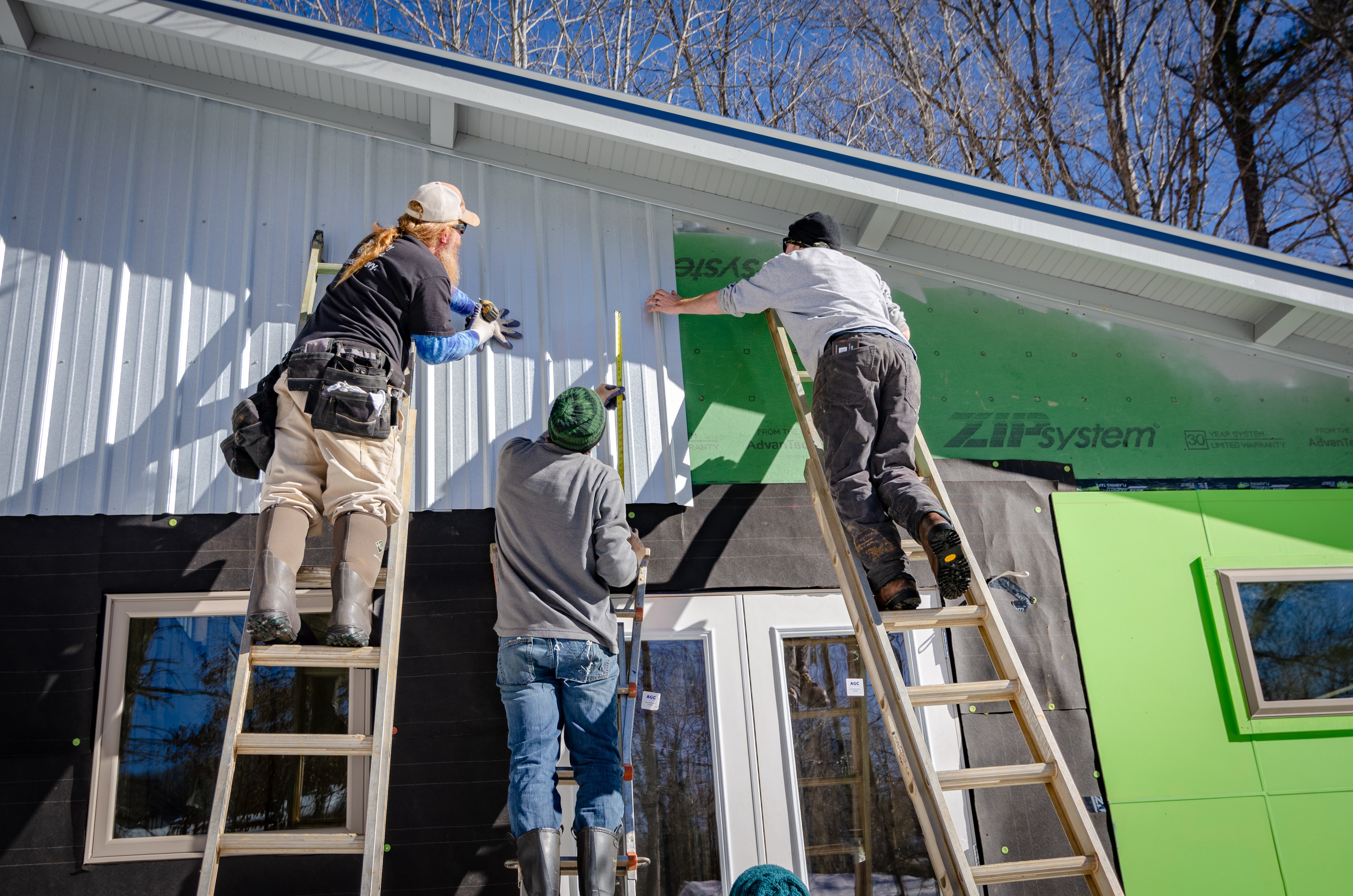A balloon payment is a type of mortgage loan with a number of pros and cons which we must consider before getting one. Read what they are here

A balloon mortgage essentially means your mortgage payment balloons at the end of your loan term. In other words, it is a lump sum paid at the end of the term that repays the home loan in its entirety.
Prior to the mortgage crisis in the early 2000s, a balloon payment when it came to mortgages was much more common than it is today—and with good reason. Some homeowners had to learn that lesson the hard way.
However, making a balloon payment on your mortgage is still possible. And in certain instances, it can be beneficial, like allowing you to purchase the property faster and by making lower initial payments. But there are downsides. After all, your home is at risk.
If you are thinking about a balloon payment, it is first important to weigh the pros and cons. Here is everything you need to know before you get one—or if you want to get out. For the mortgage professionals who make up the core of our audience, we encourage you to share this with clients who have questions about this type of mortgage product.
What is a balloon mortgage and how does it work?
A balloon mortgage is a home loan with a one-time payment due at the end of the loan term. Usually significantly bigger than the initial payments, the final payment—the balloon payment--repays the loan in its entirety.
Balloon payment: What it is
Ending with a final lump-sum payment, a balloon mortgage starts off with fixed payments for a pre-determined period. Since it is much bigger than the initial payments, the one-time payment is called a balloon payment. According to the definition of a balloon loan, this last payment is typically at least two times the average monthly mortgage payment—which often equals balloon payments in the tens of thousands of dollars.
Balloon payment: Pre housing crash
Prior to the housing crash in the mid- to late-2000s, balloon loans were much more common in mortgage lending. If, during that time, you wanted a more affordable mortgage, the small initial payments required to secure the balloon loan was appealing.
One of the issues was that, before the balloon payment was due, homebuyers planned to refinance to a new mortgage. However, when home values dropped, many homeowners were unable to refinance. If you failed to make your balloon payment, you went into mortgage default.
Since that time, laws were enacted to clamp down on balloon payments, for the most part. While some lenders still offer mortgages with a balloon payment, they are typically more common in private lending, portfolio lending, and construction lending.
Balloon payment: How it works
The terms of a balloon payment depend on your mortgage lender as well as the home loan. Typically, however, a balloon mortgage will have fixed payments for a specific period, which then ends with the balloon payment.
During the initial period, balloon mortgage payments are typically smaller since they are not yet fully amortized. (Amortization means repaying a loan with payments that decrease the balance and repay the loan over time.) Occasionally, payments during the fixed period are interest only.
What are pros and cons of a balloon payment?
While balloon payments have become inadvisable for the average borrower, it is important to weigh the pros and cons before reaching a conclusion. In most cases, balloon mortgages are better suited for investors with a lot of experience. And even then, it is best to treat a balloon payment cautiously.
Balloon payment: The pros
First, let’s take a quick look at the pros of a balloon payment:
- Low initial payments. During the fixed period, your monthly payments will be smaller than a fully amortized loan. This is especially true if you balloon mortgage is interest only.
- Purchase a property faster. If you are expecting a significant bump in income or a lump-sum payment in the future, you can leverage a balloon mortgage to buy a property faster—even before the money arrives.
- Shorter underwriting process. Most lenders issuing balloon mortgages offer a considerably shorter underwriting process, especially compared to other types of mortgage loans.
- Finance construction projects. If you want to finish a construction project while making lower monthly mortgage payments, you may be in the market for a fix-and-flip loan, which usually comes with balloon payment features. But beware—these types of loans usually come with fees and high interest rates.
- Less documentation. If you get a balloon mortgage, you may not need to get a home appraisal or any other documentation you would typically need for more traditional financing. This does, however, depend on the lender as well as the loan term.
The positives of this type of mortgage product may make them somewhat appealing, but they must be weighed against the issues outlined below.

Balloon payment: The cons
While there are some benefits to a balloon payment, there are significant drawbacks, with consequences as severe as losing your home. Here is a quick look at the cons:
- Lose your house. The main reason that a balloon mortgage is so risky is that you may end up losing your home, unless you know for sure you will have the funds to pay off the loan. Your lender can foreclose on your home if you are unable to make the balloon payment.
- Borrow more money. You might have to resort to taking out an additional loan if you fail to make the balloon payment when it is due.
- Build equity more slowly. Due to amortization with balloon payments, the monthly mortgage payments before the final balloon payment do not pay off much of the principal. If it is an interest-only loan, it will not pay off any of the principal. Balloon payments therefore build almost no home equity—if any at all—and could be more difficult to finance.
- Qualifying challenges. A lender that offers you a balloon mortgage will likely require you to make a higher down payment and have a higher credit score.
- Higher interest rates. Due to the high amount of risk involved, most balloon mortgage rates are higher than interest rates on qualified mortgages. Standard loan options typically provide better rates to most consumers. Some examples of more favorable loan options include USDA, VA, and FHA loans.
Read more: FHA Loan Requirements, Tips, and Advice
As you can tell, this type of mortgage product is for experienced investors who have really taken the time to look at the math. You will also find that balloon payment mortgages can be difficult to obtain thanks to what we learned during the subprime mortgage loan meltdown of the mid 2000s.
How does a balloon payment differ from other loans?
A balloon mortgage differs from other home loans in a few ways, not merely the lump-sum payment due at the end of the loan term.
Here are four key ways balloon mortgages differ from other loans:
- Type of lenders
- Criteria to qualify
- Interest rates
- Amortization
Here is a closer look at each of the ways a balloon payment differs from other loans:
1: Type of lenders
The type of lenders that offer balloon loans is a significant difference from the lenders that offer other loans. In most qualified mortgages, a balloon payment is one of several key features that is not allowed.
Balloon loans are also excluded from loans that are considered stable and meet established guidelines. For these reasons, balloon mortgages are offered usually by private or small lenders, or for specific types of lending such as construction.
2: Criteria to qualify
Balloon mortgages also differ in the underwriting process and eligibility requirements. Usually, lenders that offer balloon mortgages establish their own requirements, since these types of home loans do not fall into the category of qualified mortgages. Balloon loans and most other non-qualified mortgages usually have stricter borrower requirements like higher credit scores and higher down payments.
3: Interest rates
Interest rates for most balloon mortgages are also different from most other types of home loan. Since lenders are usually taking a greater risk, balloon mortgage rates tend to be higher.
4: Amortization
Standard loans—such as 30-year fixed-rate mortgages and five-year auto loans—are fully amortizing loans. This means that you pay down the loan balance over the entire loan term, slowly. In other words, a portion of your monthly payments covers your interest costs, and the rest goes toward reducing the balance of your loan.
With balloon mortgages, on the other hand, you mostly pay the interest for the first few years, until you make a substantial payment that covers the entire remaining balance of the loan. In other words, there is no gradual shift toward repaying the principal.

How do I handle a balloon payment?
When you handle a balloon payment, you are getting rid of it or extinguishing it. While it can be challenging, you can move from a balloon payment to a more stable loan in several ways. Here are five options available to you:
- Refinance
- Pay it off
- Sell the property
- Pay more initially
- Negotiate
Let’s take a closer look at each to give you a better idea of your options:
1. Refinance
You can obtain another loan when the balloon payment is due, which is basically a refinance. The new loan will expend your repayment period, sometimes by adding another five to seven years. Another option would be to refinance a mortgage loan into a 15- or 30-year mortgage.
However, to successfully refinance you will have to qualify for the new loan, which means your income, credit, and assets must be solid when you make your balloon payment. When refinancing on a long-term loan, for instance, you could wind up paying much more in interest since you are borrowing for a longer period.
Additionally, when you refinance, you should hope that interest rates are the same or lower compared to when you first borrowed. Otherwise, you may want to opt for a traditional amortizing loan, if available to you.
2. Pay it off
While this sounds naïve, you may want to simply pay off the home loan when it is due—if cash flow is a non-issue for you. Of course, this is not always possible. After all, a lack of money is the reason you borrowed in the first place. What’s more, balloon payments can be tens of thousands of dollars more.
However, if you can generate the cash you need prior to the balloon payment deadline, you would be in the position to pay it off.
3. Sell the property
If you want to get out of a balloon mortgage, you can sell the property. This option works with which asset you bought with the loan (a vehicle, for instance). In this case, if you sell your property, you can use the money to pay off the balloon mortgage in full, assuming the property will generate enough money to pay the entire loan balance. Before the housing crisis, for instance, many properties were worth considerably less than the homeowners’ owed.
4. Pay more initially
While it is not a requirement, you might be able to pay some of the debt early on. If you pay more than the interest assessment, it will be applied to the principal balance. Keep in mind, however, that you will want to confer with your lender to make sure there are no extra fees or prepayment penalties.
5. Negotiate
Negotiate an extension. Like the refinancing option, an extension in this case would change the terms of the previous loan. Rather than getting a new deal, however, an extension would simply delay the timing of the balloon payment. In other words, you will have different obligation dates but still likely have the same payment terms as you did before.
As we have seen, there are several reasons that a balloon payment can be beneficial. It is important to remember, however, that there are an equal number of drawbacks. After all, your home is at stake. Before committing to a balloon mortgage, it is best to weigh the pros and cons with a professional to ensure you make the best choice for you. Visit our Best in Mortgage section to find a quality mortgage professional to work with and be sure to switch to the region that you live in using the navigation in the top left.
If you have already committed to a balloon payment, keep in mind that there are options open to you if you’re now finding that it no longer works for you.
Do you have experience with a balloon payment? Was it a good idea for you? Let us know in the comment section below.



